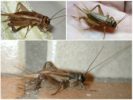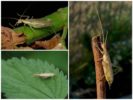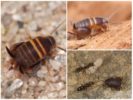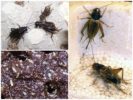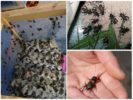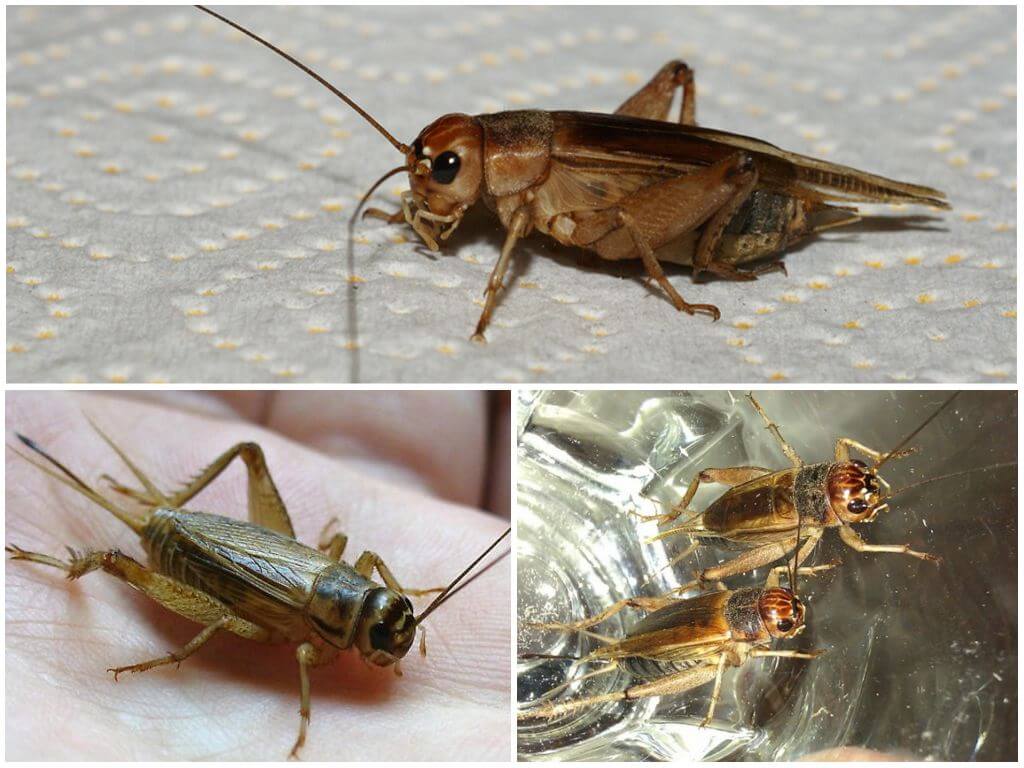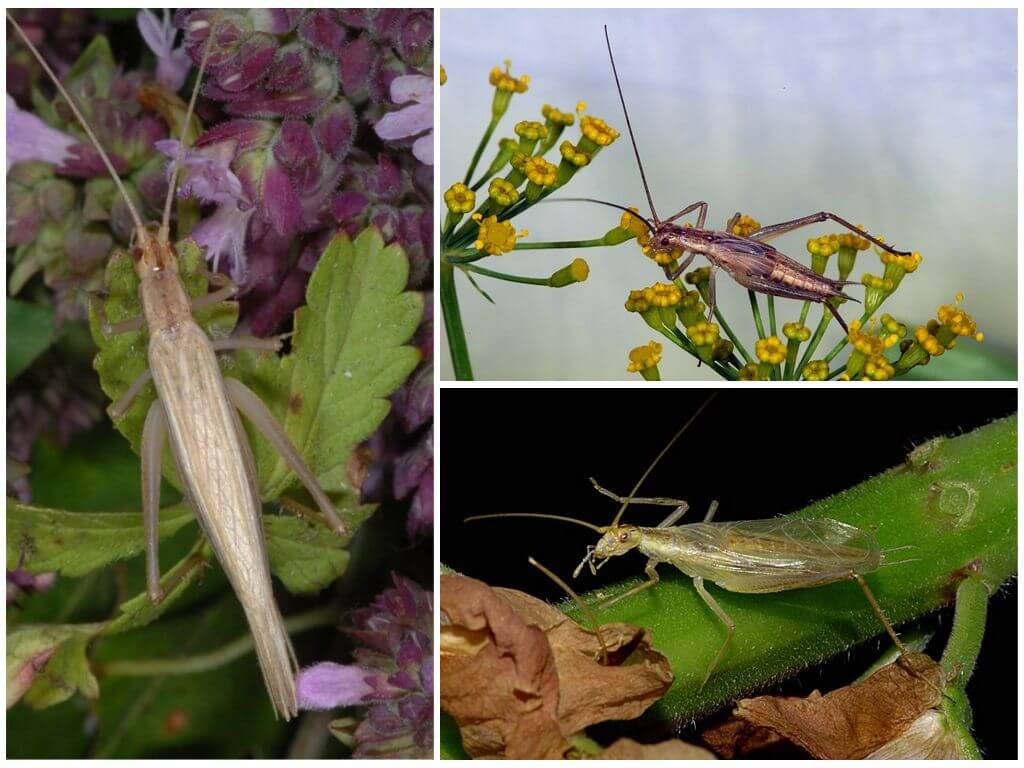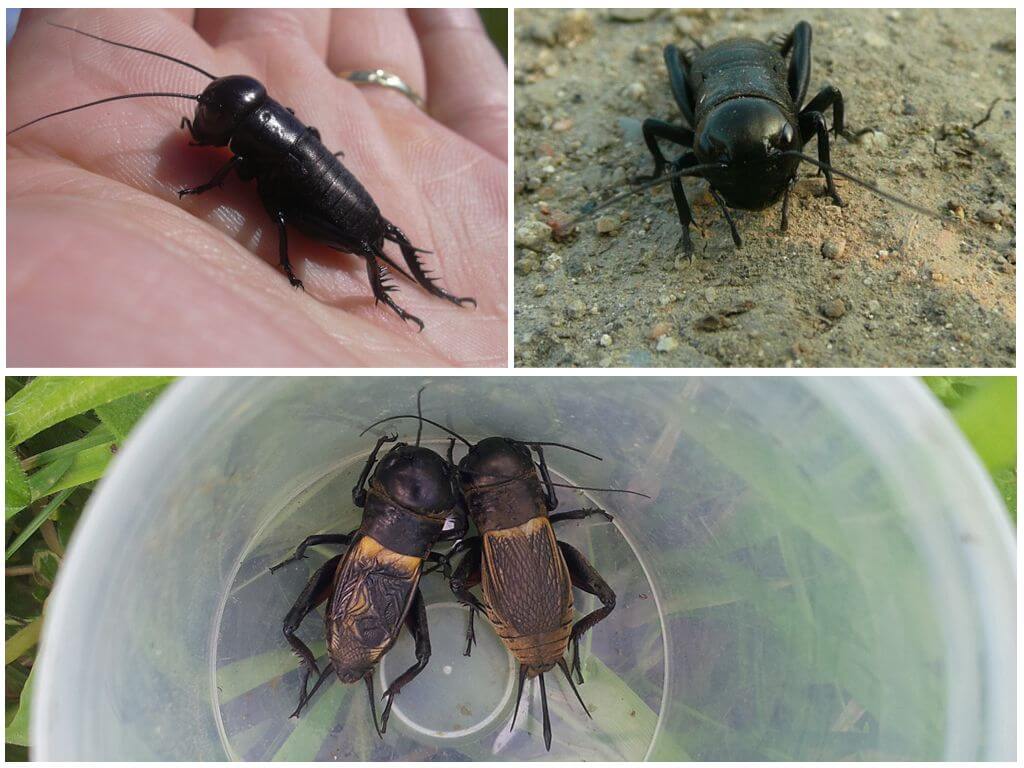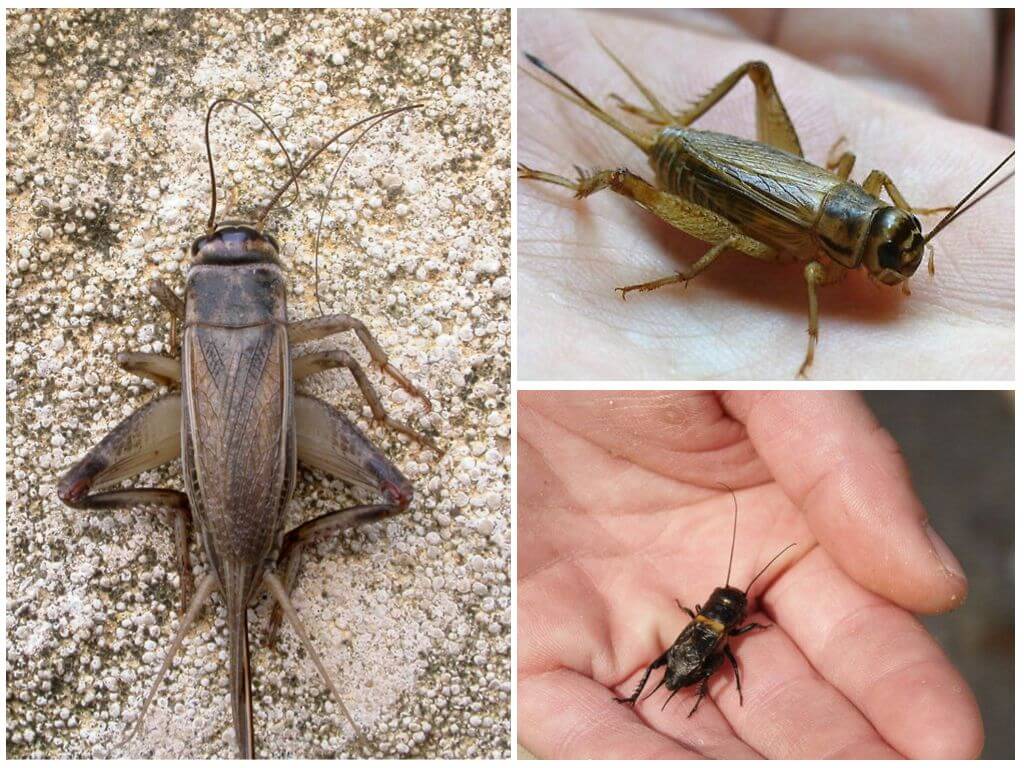- House cricket
- Field cricket
- Cricket Stem
- Ants
- Cricket breeding
- Breeding crickets at home
Crickets singing since ancient times it has been associated with home and comfort, and insects themselves have never caused discomfort, many times they became the heroes of children's fairy tales and cartoons. Information about what a cricket looks like, where it lives and what it is interesting for, will appeal to all curious readers.
Description and types
Crickets are close relatives of grasshoppers and are part of the group of long-winged orthoptera. Their name comes from the Greek word "singer".
Entomological scientists distinguish several families and varieties of crickets:
- real - a family that is divided into 3 types: brownies, field and stem Far East;
- ants, also called ants.
House cricket
Domestic cricket is an insect, the homeland of which is considered the Far East and North Africa, where they have long lived together with people: in residential and industrial buildings. In the warmer months, crickets move closer to nature, and with the onset of cold weather they again return closer to heat human housing. In the field, they dig minks up to 30 cm deep, and when going out to hunt or patrolling the territory, close it with a bunch of grass.
As can be seen in the photo of the brownie cricket, it is an insect of gray-yellow color, decorated with variegated and brown spots on the body and three stripes on the egg-shaped head, the length of the adult is 15-25 mm. The eyes are located on both sides of the head. A long mustache sticks out in front, larger in size than the insect itself, they serve as the organ of touch. The body is covered with a special chitinous shell that protects against external influences and reduces moisture loss in the body.
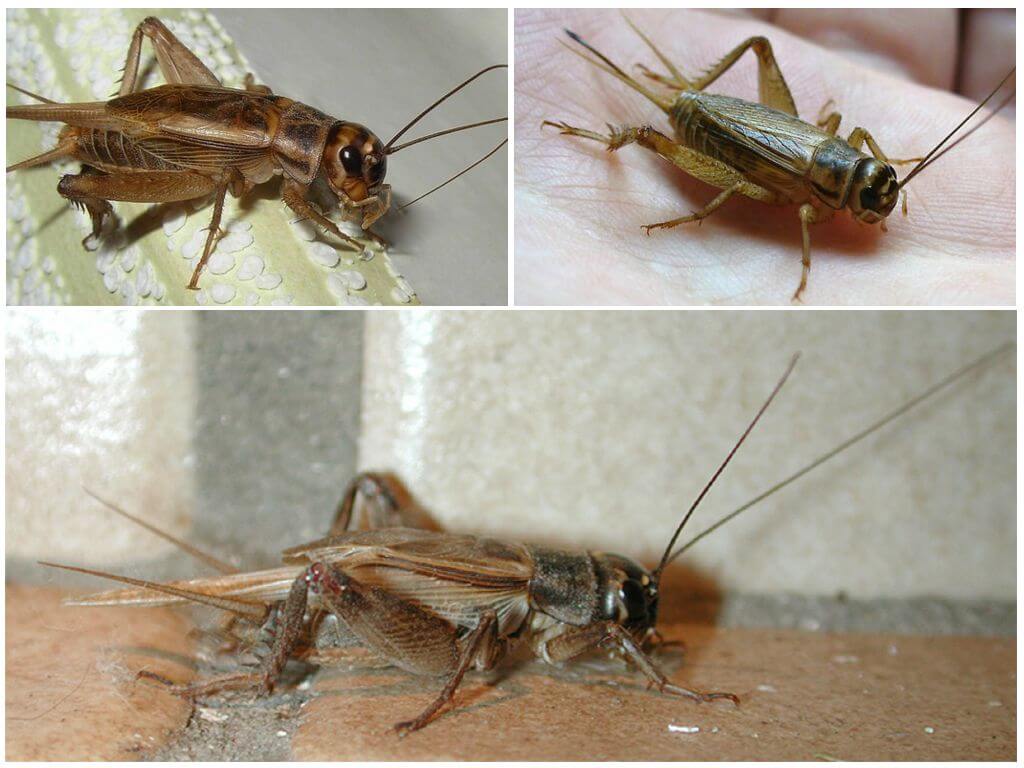
This type of cricket has wings to help them fly to the right place, when folded, they look like elongated tails. However, these insects cannot really fly. He has 3 pairs of limbs: the rear ones are stronger - designed for jumping, the front 2 pairs - play the role of auditory organs.
Only males can make sounds and “sing”, which they successfully use to attract the attention of females and procreate. The sound apparatus of crickets consists of a stridulatory vein, which acts as a bow when rubbing against the left elytra of an insect.
There are 3 types of sound signals: when searching for females, when courting, and “hostile” sounds to scare away other applicants for the role of suitors.
Interesting!
Many ancient beliefs say that if a cricket is wound up in the house, it brings good luck and happiness, protects its inhabitants from evil, disease, and pregnant women are “promised” easy births. Therefore, it is not customary to get rid of such "vocalists" as unwanted guests. However, not all owners like arias of insects that interfere with sleep. Therefore people prefer to get rid of singing crickets settled in the apartment.
Unlike domestic insects, having settled in the garden and multiplied in large numbers, crickets can become pests, gnawing vegetables, especially melons.
Field cricket: photo and description
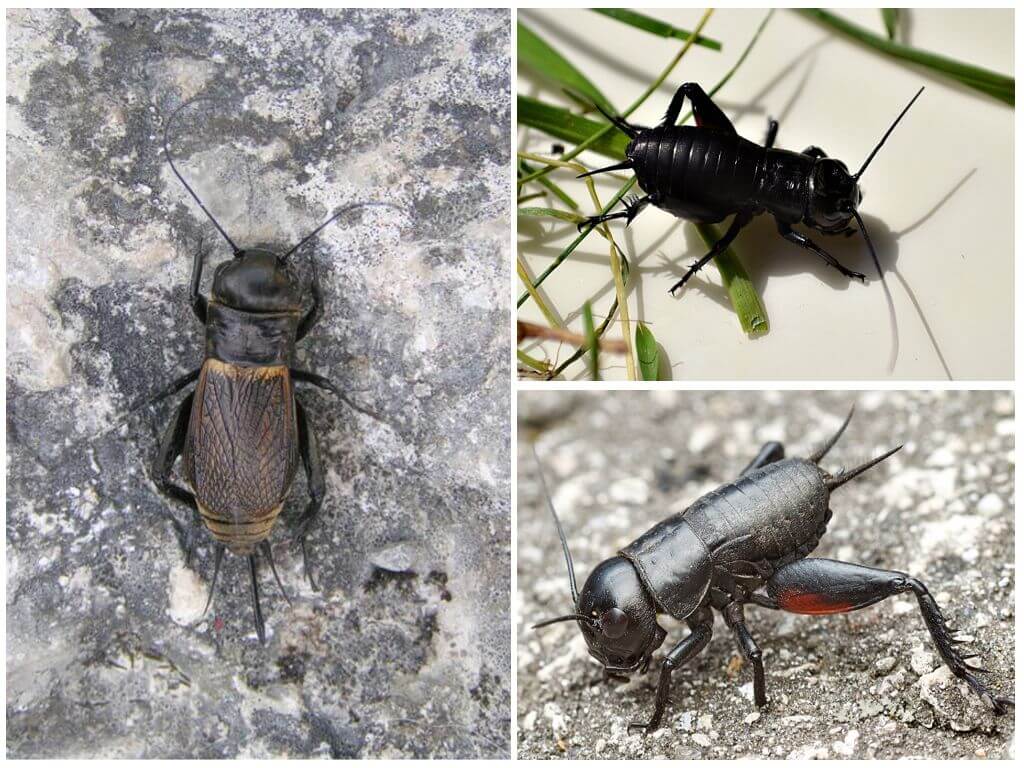
Insects of this species are common in southern and central Europe, Asia Minor and West Asia, and North Africa. Habitats - fields and meadows well lit by the sun, pine forests where they make burrows up to 20 cm deep.
The size of the field cricket is larger in comparison with other species: females - 17-22 mm, males - slightly larger (up to 26 mm). The body color is black with shine, sometimes brown, decorated with orange spots. The head is rounded with two antennae, antennae, on the forehead 3 ocelli (simple eyes).
Insects are omnivorous, but prefer to eat leaves and roots of herbaceous plants, occasionally catch small representatives of the fauna or eat their corpses.
Cricket Stem
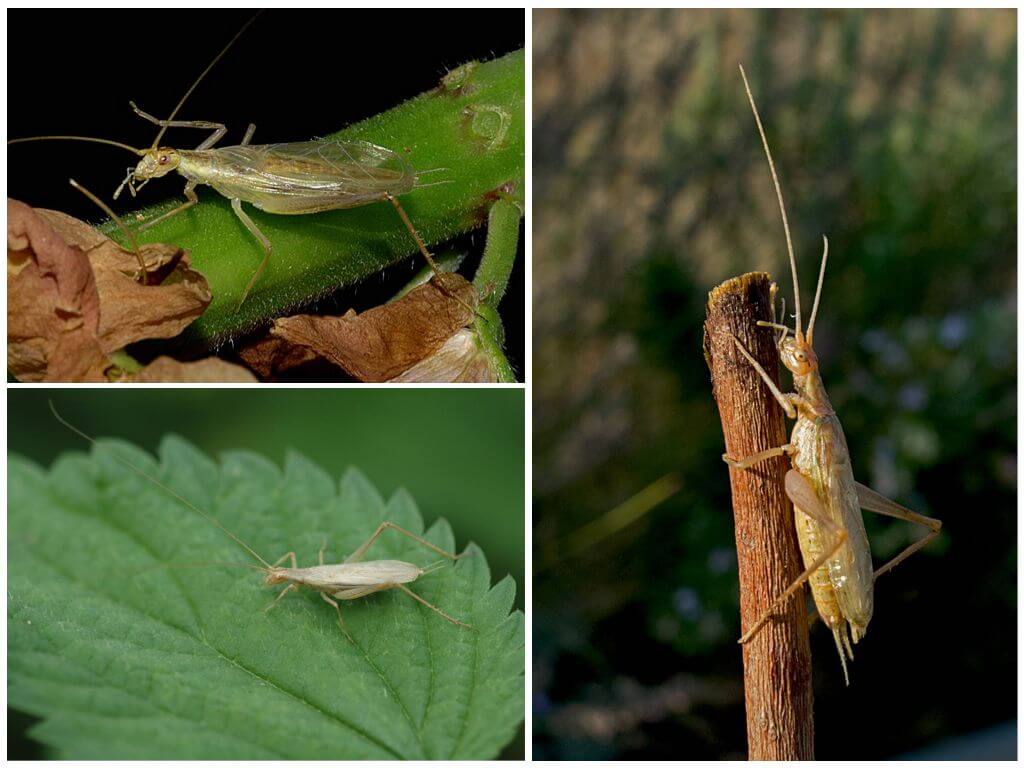
The Far Eastern or stem species belongs to the family of real crickets, another name is “Oriental trumpeter”. Insects have a light green elongated trunk up to 13 mm long; a black stripe runs along the bottom of the abdomen.
They got their first name because females lay eggs in the stems or petioles of plants, in each clutch - 2-4 pieces. Larvae emerge from eggs in mid-summer, they are smaller in size compared with adults, the wings are present in the form of primordia. In August-September they turn into adults.
The second of the names indicates where the cricket lives: it lives in the Far East of Russia, as well as in China and Japan.
Ants
The smallest in size - ant crickets - reach 3-5 mm, they have no wings, in appearance they look like cockroach nymphs. They are not capable of making any sounds and cannot even hear them.
This family lives in South America, where it was discovered by an entomologist from Switzerland A. de Saussure at the end of the 19th century. Now this species is also found in Europe. Their place of residence is associated with nests of ants: larvae and adults winter in the anthill, the development cycle of larvae from eggs lasts 24 months. and consists of 5 stages.
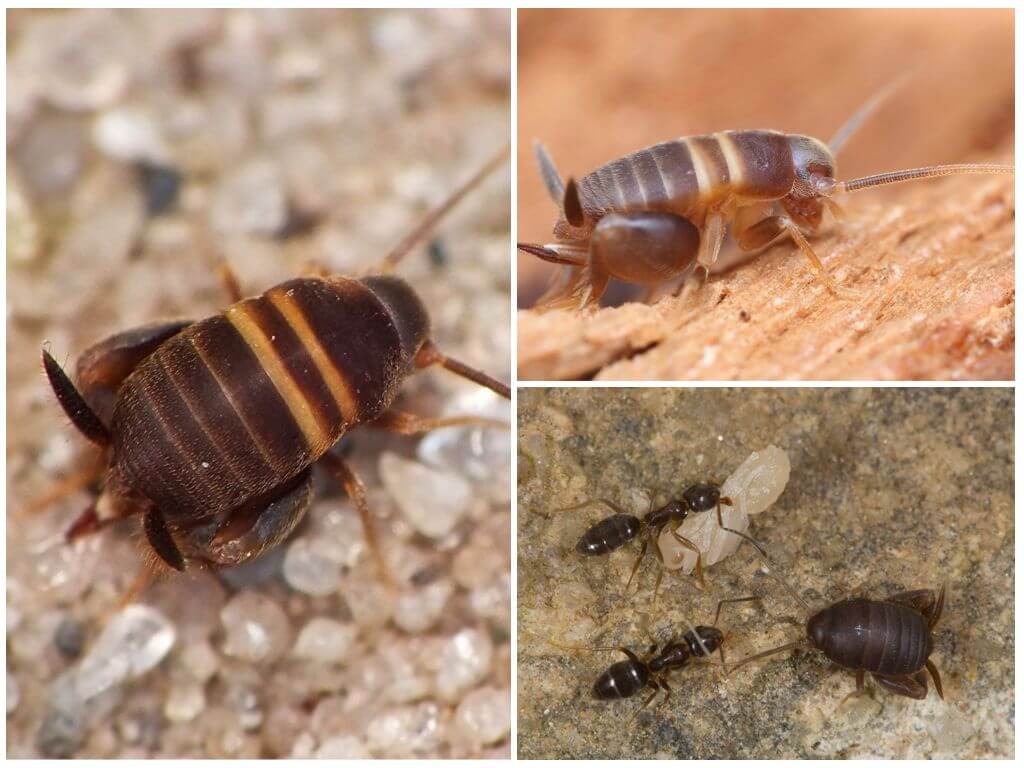
How many crickets live, favorite habitats
The habitat of such insects covers almost all countries of Europe, North Africa and Asia, as well as southern Australia. Most recently, they appeared in America, where they were brought by immigrants from European countries.
The life span of a home cricket is 1.5-3 months, of a field one - up to 15 (including hibernation), and in tropical insects it can reach 7 months.
Homemade crickets prefer to live near people's homes. They belong to omnivorous insects that are able to eat both plant and animal food. Getting their food, they prey on small invertebrates, able to eat other smaller insects.
Interesting!
Crickets in some situations can attack their brothers, eating small relatives, which in nature is widespread and is called cannibalism.
The optimum temperature for the life of a cricket is not less than + 20ºС; when it is reduced, the insect leads a sedentary lifestyle, lives without food (even the larvae stop developing), and when it drops to minus, it hibernates.
They often settle not only in houses, but also in old buildings, they like high humidity, they look for cracks and rugs for living. Within cities, they are found on the upper floors of apartment buildings, sometimes a lone cricket even settles on the balcony, but nevertheless they prefer wet and warm basements or boiler rooms.
On a note!
In the East, the local population considers the “singing” of crickets a symbol of peace and comfort: in Japan and China, some lovers keep them as pets in small cages especially for listening to “songs”. In North America, such insects are used as bait for fishing, and in Asian countries they are eaten.
Cricket breeding
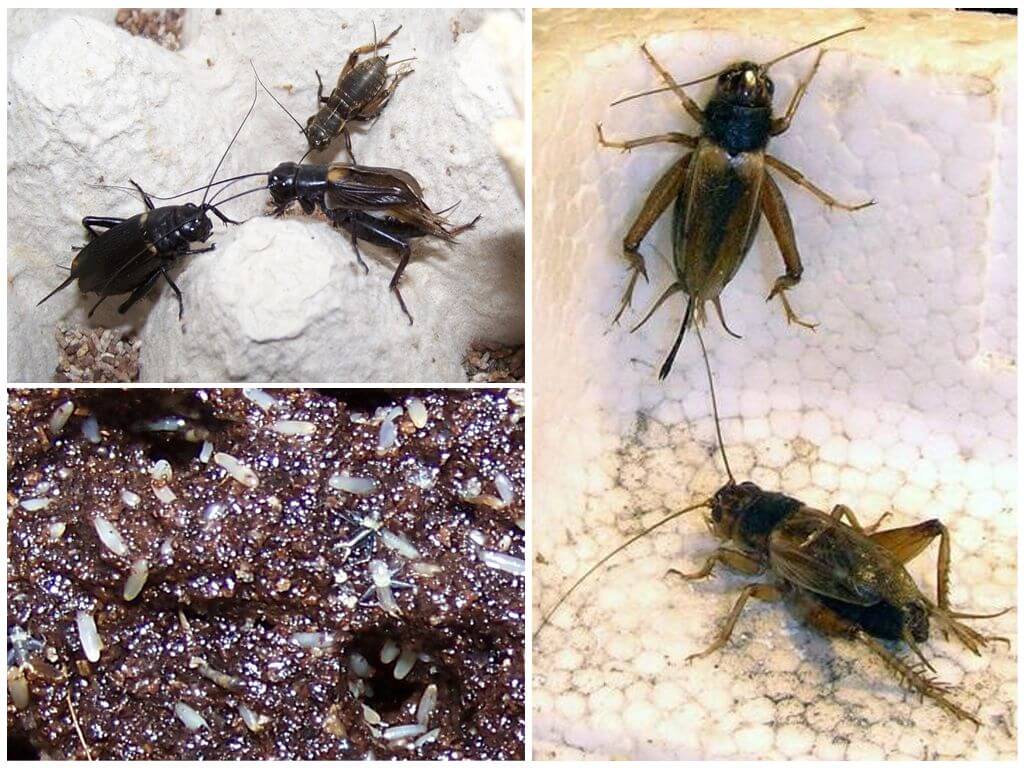
Crickets belong to polygamous insects, i.e., one male occupies a certain territory where several females live, forming a small harem.During the assassination attempt by strangers, they will surely sort things out by fighting, during which they bite off each other's paws or mustache, and bang their heads. Having won, the male often eats the opponent.
Interesting!
Such a spectacle attracts fans of thrills, which in some countries even arrange competitions and fights of crickets. Moreover, for insects preparing for battle, a special diet was invented, and before starting, males arrange dates with females to stimulate aggression.
The process of reproduction can occur year-round, but the maximum sexual activity in them is manifested in the summer. Mating usually takes place in the mink, where the female comes after hearing the groom's “trills”.
A few days after fertilization, the female lays eggs in a hole prepared in the ground, piercing the soil with her long ovipositor. The number of eggs depends on the temperature: the higher it is, the more. Usually it is in the range of 50-200 pcs., In the southern climate, the clutch consists of 500-600 eggs. In shape, they resemble small white bananas.
After 1-12 weeks, depending on the temperature regime, nymphs appear, which in the first days are hidden in a mink or under stones, the pupal stage is absent. Larvae are usually wingless and smaller, otherwise they are similar to adults. The cricket larva sheds 9-11 times during growth, and only after 1.5 months. becomes sexually mature. After each change of the shell, the insect looks like a white cricket with spread wings.
On a note!
The largest cricket was discovered by a ranger in a park in New Zealand who managed to feed him carrots. The size of the insect was 18 cm in length.
Growing crickets at home
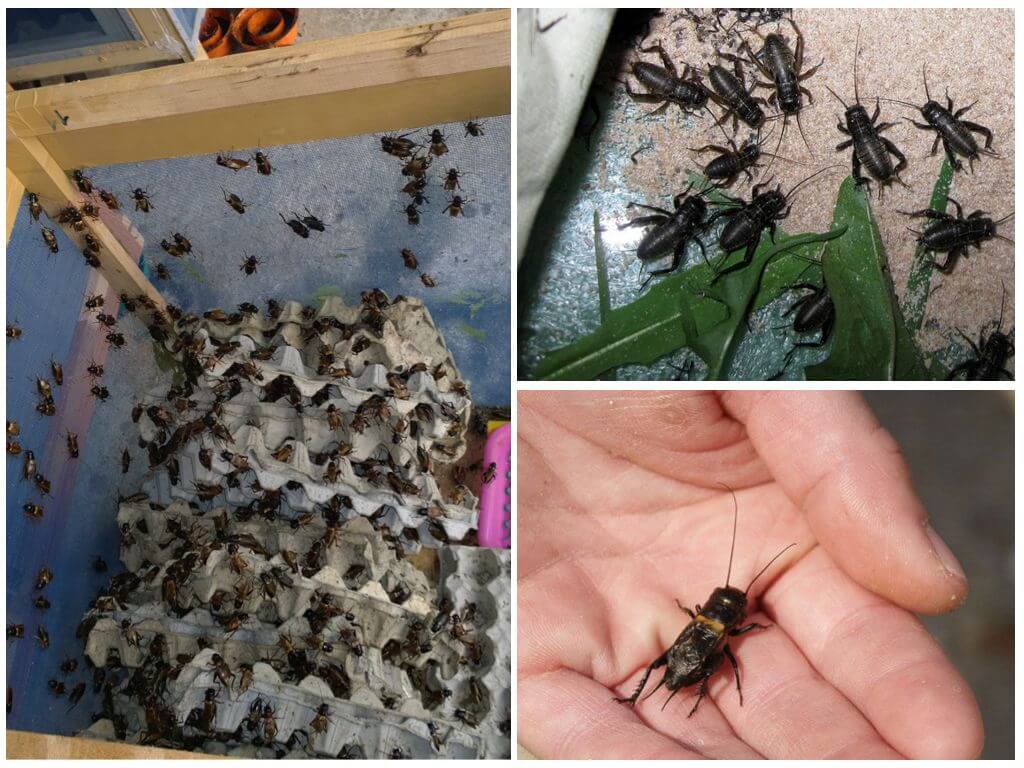
In recent years, breeding of many species of insects in insectariums arranged in an apartment has become popular. Crickets easily take root at home, and their breeding is not difficult. The purpose of their cultivation is often to prepare food for other pets: lizards, amphibians, birds or reptiles, which feed insects.
The insectarium is made of glass or plastic, the bottom is covered with a mixture of peat and sand, the installation of incandescent lamps for lighting and heating, ventilation is mandatory, the optimum humidity is not more than 40%. No more than 3 males and 15 females can be planted in one container.
In the insectarium they are fed with oatmeal, leftover vegetables and fruits, sometimes they give cat food or baby food, bread crumbs and corn sticks as a dessert, apples and carrots - in small portions in grated form.
Be sure to have plant foods in the diet: tops of vegetables and lettuce, burdock leaves. They get protein from the following feeds: fishmeal, chicken eggs or gammarus.
Water is necessary for the normal development of such insects, so put a moistened sponge in the container instead of a drinker.
The largest insectarium is located in the Moscow Zoo, where crickets are successfully bred for food for some animals and birds.
